Race Face Atlas Flat Pedal
| Where To Buy | |||
|---|---|---|---|
Free shipping on orders over $50 (continental U.S. only).
International shipping available. Some exclusions apply. |
Free shipping on orders over $50 (continental U.S. only).
International shipping available. Some exclusions apply. $144.00
|
||
Free shipping on orders over $50 (continental U.S. only).
International shipping available. Some exclusions apply. |
|||
Review by Johan Hjord // Photos by Johan Hjord and Tal Rozow
As part of its ever expanding line of components, Race Face introduced two new flat pedals for 2014, the mid-range Aeffect and the high-end Atlas. Designed on the North Shore (and manufactured in Taiwan), the Atlas is a distinctly modern flat pedal, featuring a large and thin platform with cartridge bearings throughout and bottom-loading pins, which should mean it’s ready for just about anything. We put a pair to the test to find out.

Race Face Atlas Flat Pedal Highlights
- Thin double concave wide platform
- Fully sealed bearing design
- Hex-head threaded pin design to provide extra bite
- Fore and aft angled bottom-loading pins
- Hidden pin / grease access port
- Body material: 6061-T6 aluminum
- Axle material: Chromoly steel
- Platform height: 12-14.5mm
- Platform size: 101x114mm
- Weight: 355g
- Number of pins: 20 hex traction pins per pedal (10 per side)
- Bearings: 4 fully sealed cartridge bearings per pedal
- Colors: Black, Blue, Red, Green
- MSRP: $179.99 USD
Initial Impressions
The Atlas pedals arrive in a rather sexy package, if such a thing exists – and that impression continues beyond the box. The pedal is beautifully finished, with deep colors and sharp graphics. The shape of the platform itself is concave in two directions, which is further accentuated by angled pins at the front and rear edge of the pedal.

The pins are bottom loading, and hexagonal in shape. They are not very long, but certainly very sharp. The pedals are delivered with a set of small washers that can be used to tune the height of each pin individually. The pins (10 per side of each pedal) are all placed along the periphery of the platform, with no pins in the middle. The pedal body itself (made of 6061-T6 aluminum) is thin and sculpted, notably with regards to the edges which are heavily chamfered in order to allow the pedal to avoid hanging up on rocks and roots as much as possible, and it also tapers off in width towards the rear of the top side (i.e. the front of the underside of the pedal). The platform itself is very open to allow mud to evacuate easily.

The Atlas features a Chromoly axle and 4 sealed cartridge bearings per side – a large bearing on the inside, and 3 small bearings at the end of the axle. This allows Race Face to keep the pedal very thin, yet it should be strong and durable enough to deal with the on-the-trail abuse that any pair of pedals has to put up with. In typical Race Face fashion, the inclusion of a spare pin that serves as access/grease port is a nice touch.

With the initial inspection behind us, and after an uneventful installation on the bike (depending on your crank arm design, you may or may not need a washer between the crank arm and the pedal, due to the design of the Atlas pedal that may cause the pedal body to end up snug to the crank arm), time to hit the trails to find out what the Atlas pedal is really made of.
On The Trail
The Atlas measures in at 101x114mm at a thickness that goes from 12mm to 14mm, numbers that sound very familiar in the flat pedal world these days. Give or take a few millimeters, that’s pretty much what most flats out there will measure in at, save the crazy wide offerings like the Twenty6 Predator. But, size isn’t everything, or so HE said. Shape is at least as important, and here, each pedal will have its own characteristics. The Atlas design is compact, even though the platform is relatively wide. The edges are rounded, and the pins placed towards the middle of the available material, which results in an effective platform that is a few millimeters narrower than the DMR Vault, for example. This never leads to an insecure or disconnected feeling, but if you are the kind of rider who likes to move their feet around on the pedals a lot, or if you frequently get your feet back on in a hurry (racing, perhaps), you might want to look for something wider. On the other hand, if you ride where it’s rocky, you’ll surely love the lower profile and the low profile leading edge. Personal preference and need is what it boils down to here (size 12 US FiveTen Impact in the pics below, for reference).

The grip on offer is excellent, whether in the dry or in an unholy muddy mess. The concave shape is spot-on, and the airy design of the pedal body means your foot always feels like it’s contacting the pedal, even when it’s covered in sticky winter goop. The lack of a middle pin is something we like, we much prefer the foot to “sink into” the middle of the pedal as opposed to sort of sit on top of it, and we've never really found that a middle pin aids traction (quite the contrary, actually). On the topic of the pins, those supplied with the Atlas are very grippy and very strong too – let them near your shins at your own risk!

The pedals spin freely from day 1, and they have a very stiff and positive feeling under the foot. With their rounded chamfered edges and thin profile, they also stay out of trouble very well, managing to avoid or skim off rocks where you might expect to otherwise hang up. This particular aspect makes these pedals well suited to trail riding and general bike mayhem, in our opinion. Slim enough to squeak by, wide enough where it matters.
Things That Could Be Improved
The Atlas pedal is well designed and well put together. The only issue we observed is a tiny amount of side-to-side play between the pedal body and the axle (when moving the pedal back and forth along the direction of the axle), an issue Race Face is aware of and says is being addressed by “ever-improving tolerances in manufacturing”. The play was present out of the box, but has not gotten any worse during testing, which points to the fact that this is indeed the cause. It is not something we were able to feel while riding either.
Long Term Durability
We’ve put the Atlas pedals through the wringer during this winter and spring, and they have held up remarkably well. After countless rockstrikes and other adventures caused by a seemingly chronic inability to pick a smooth line at times, the pedals obviously have some scuffs to show for it – but overall, the finish still looks great. The laser-etched graphics are still there, the bearings are still super smooth and free of any vertical play, and most of the pins are pretty much intact.

We’ve managed to bend the seat of one of the pins a bit, but the pedal material has not cracked nor has this caused any other problem. Judging on the performance so far, this pedal seems in it for the long haul, especially given how straightforward it is to maintain it, when that time comes:
What’s The Bottom Line?
If you are after a flat pedal with a platform that strikes a good balance between width and a stealthy profile, the Atlas should be on your list. It is superbly finished and works well for all kinds of riding in all kinds of conditions. It holds up to abuse and always feels solid, and it doesn’t hurt that it looks great too. It is certainly not the cheapest option out there, but clever design and good durability are enough to give you excellent value for your money.
More information at www.raceface.com.
About The Reviewer
Johan Hjord loves bikes, which strangely doesn’t make him any better at riding them. After many years spent practicing falling off cliffs with his snowboard, he took up mountain biking in 2005. Ever since, he’s mostly been riding bikes with too much suspension travel to cover up his many flaws as a rider. His 200-pound body weight coupled with unique skill for poor line choice and clumsy landings make him an expert on durability - if parts survive Johan, they’re pretty much okay for anybody. Johan rides flat pedals with a riding style that he describes as "none" (when in actuality he rips!). Having found most trail features to be not to his liking, Johan uses much of his spare time building his own. Johan’s other accomplishments include surviving this far and helping keep the Vital Media Machine’s stoke dial firmly on 11.
6 member reviews
I like that they keep your feet away from the cranks.
Nice color options
Solid grip
I’d like them to be a bit concave. I don’t like being overly locked in so adding a bunch of pins isn’t the answer for me but a little concave would make it a bit more secure
Had these on a few bikes. I’d run them again and probably will. I love the size and pin count. They spin a bit too freely for some folks but I don’t mind it most of the time.
So far durability has been good. I’m a big dude so I definitely put them through their paces. But I do live in California so the only moisture they’ve seen is a few rides in Oregon.
Solid pedal.
0 comments
Post a reply to: Solid pedal
These are great pedals, especially if you get some at a discount. They bite into your shoes very well and your shin if not careful.
0 comments
Post a reply to: Scars for days
if free spinning bearings are no big deal for you, and you want a good size platform with lots of grip, this is the pedal for you
0 comments
Post a reply to: race face atlas pedals
I wanted to love these pedals as the platform size and weight were great, but there were too many flaws that had me swapping them out. Loved the grip and thickness of the pedal, but what really did me in was the large bearing that pushed my foot over. This coupled with the play that developed had me selling them. For the price, there are better options out there with the same amount of grip, albeit it a slight weight penalty.
0 comments
Post a reply to: Good Could Be Improved
These look great and are light weight and spin freely which was my main concern. So many new pedals with IGUS bushings that are great but don't spin freely. I would recommend these if you want something with lo-drag, grip great, look great and come in many colors.
0 comments
Post a reply to: Great Platform Pedals
So, let's take about durability first, cause that's been my main issue with these pedals.
About an hour into the first ride, the body came loose from the axle on the left pedal. Not the best start, but i went home and applied some locktite to the fastening screw. Then on the second ride the same thing happened to the right pedal (Yeah I know, I should have applied locktite to that one too. Call me an optimist.) That seems to have fixed it, cause I haven't had them fall off since. However after a few rides they started developing side-to-side play, and unlike Vitals reviewer I can certainly feel it while riding, though not enough for it to be more than a minor annoyance.
My other issue is with the bearing bulge. It makes the pedal feel smaller than the numbers would seem to indicate, and I've never really gotten used to it being there, possibly because I also use other flat pedals. It also seems to cause the inner bearings to wear faster because mud trapped in the small opening between the crank arm and the pedal gets forced in through the seal while pedaling.
This got pretty negative so I should probably mention that the pedal body is the toughest and lightest I've ever seen. And while the grip is not as good as my reference pedals (DMR Vault) it's still decent, and it does make it easier to reposition your feet.
This could be a great pedal it they redesign the axle/bearing interface. As it is I can't really recommend them to anyone, particularly if you ride in wet conditions
0 comments
Post a reply to: Flawed design
Specifications
| Where To Buy | |||
|---|---|---|---|
Free shipping on orders over $50 (continental U.S. only).
International shipping available. Some exclusions apply. |
Free shipping on orders over $50 (continental U.S. only).
International shipping available. Some exclusions apply. $144.00
|
||
Free shipping on orders over $50 (continental U.S. only).
International shipping available. Some exclusions apply. |
|||























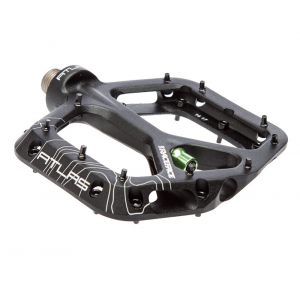
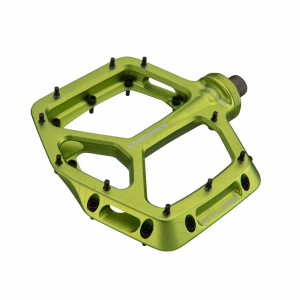
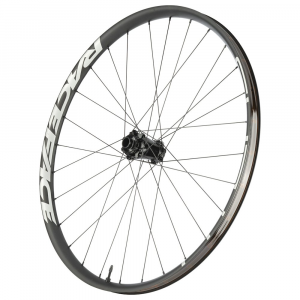
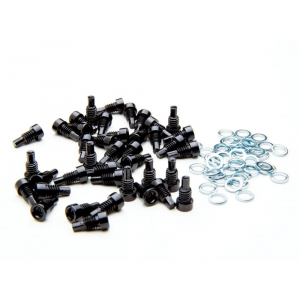
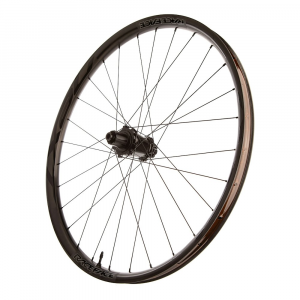
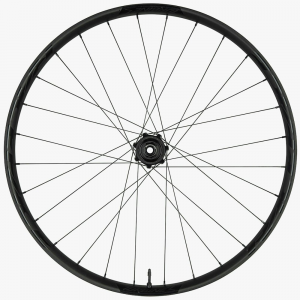




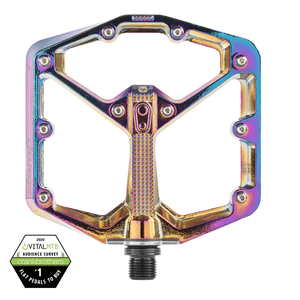
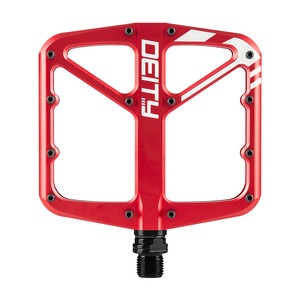
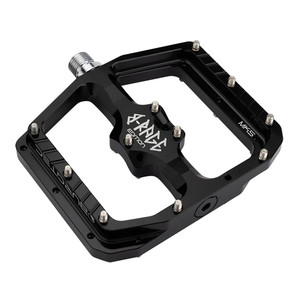












6 comments
Post a reply to: Tested: Race Face Atlas Flat Pedal